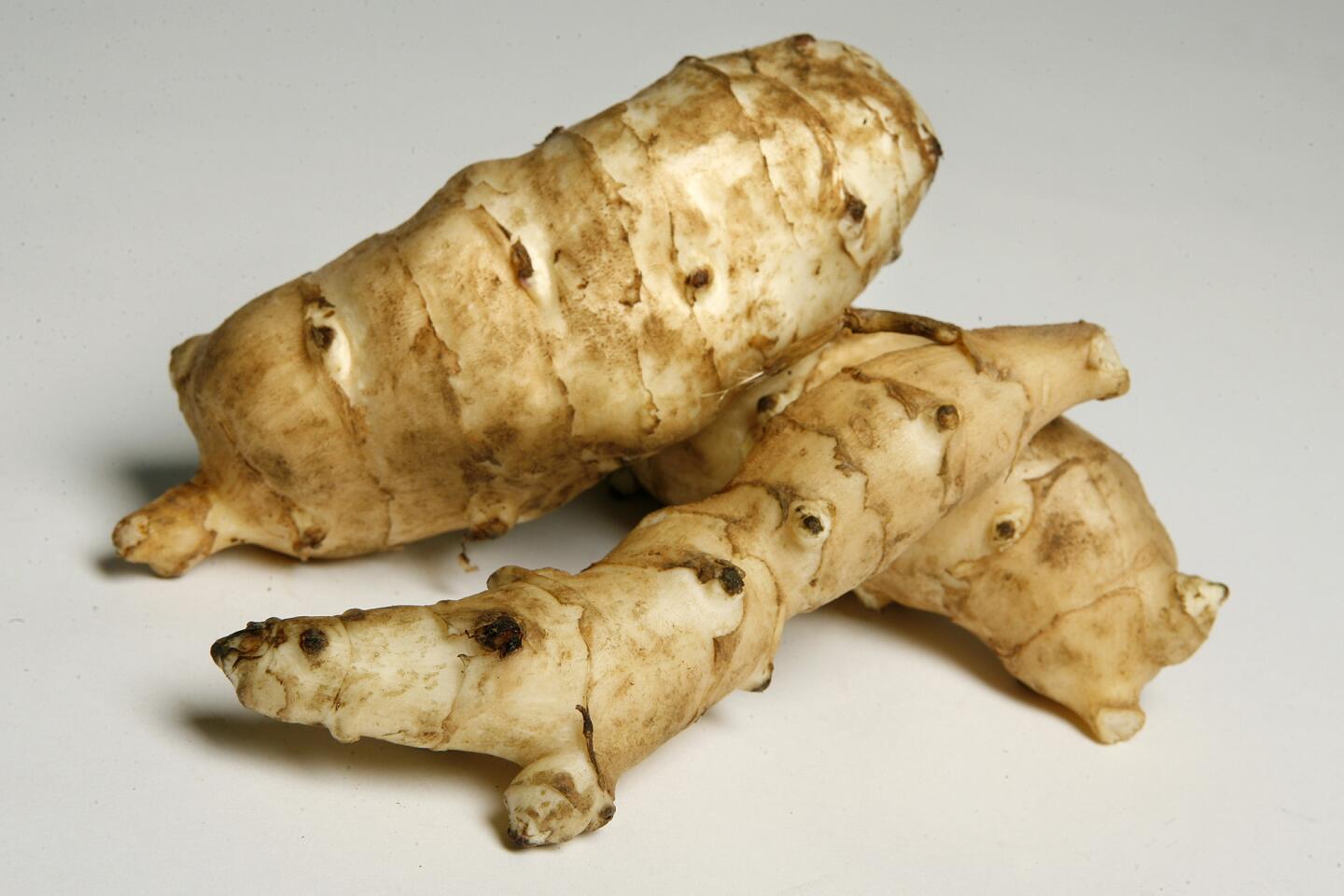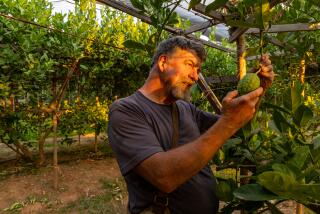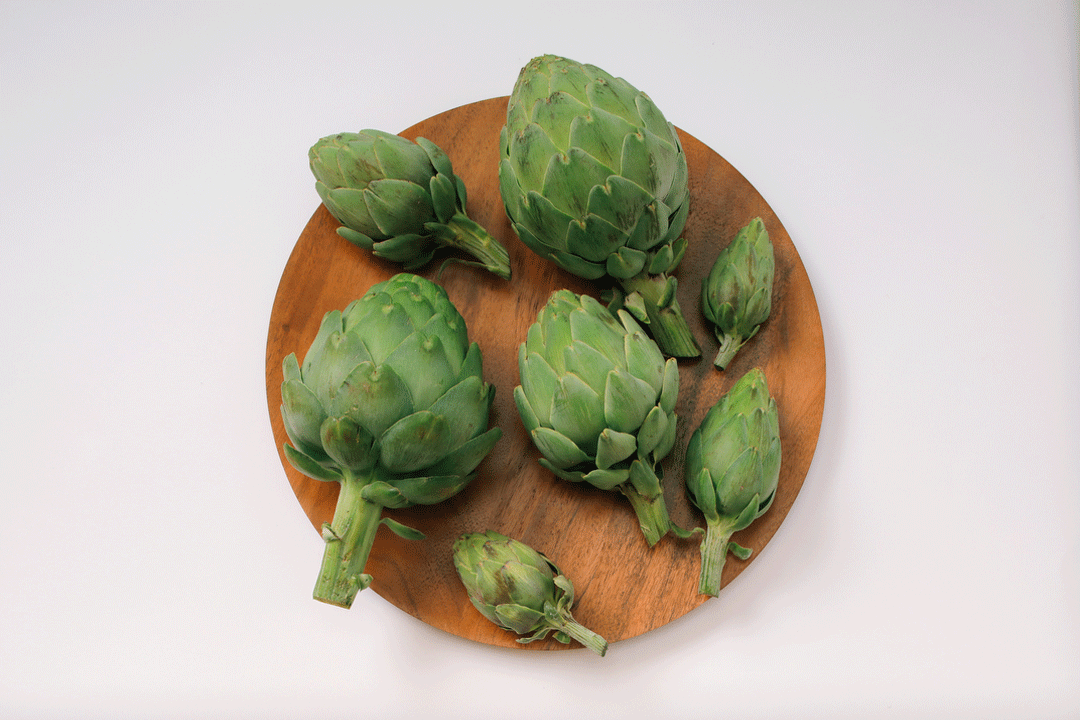Jerusalem artichokes, a lazy gardener’s top crop?
- Share via
One of the enduring lessons of gardening life is to remember the recommendations of other gardeners.
More than a year ago, musician and edible gardening consultant Lauri Krantz told me that she was stunned by a harvest of Jerusalem artichokes from only eight plants. Krantz, whom I profiled last year, had put them in a garden for chefs Suzanne Goin and David Lentz, mostly for the pretty yellow blooms that appear in August and last for a month.
While transitioning the garden to fall, Krantz found more than 400 edible tubers in the soil, so many she needed help carrying them out of the garden.
I’m hoping for a similar experience. Whenever I’ve gone to a nursery, I’ve remembered Krantz’s remarks and looked in vain for starter plants. Eventually I just planted a handful of tubers bought from my local Gelson’s and was amazed at the size of the shoots that came up a month later, growing in a plot that got just half a day of sun and never had crops that flourished.
I can’t begin to dig for my harvest until the flowers expire, but even so, I feel rewarded already by the vigor of the plants. Even those tubers I miss this year could emerge next year, like potatoes -- the gift that never ends.
Related to sunflowers, Jerusalem artichokes (Helianthus tuberosus) are also commonly called sunchokes. The plants are native to the eastern U.S., growing around wooded areas and often reaching 10 feet or higher. They are perennials that live through winter easily, even in cold climates.
The plants develop dozens of tubers underground that are delicious when lightly cooked -- sweet, similar to a water chestnut. Like a fast-cooking potato minus the starch, the tubers are used in soup or baked for 10 to 15 minutes. (If overcooked the ginger-sized tuber turns into a pulpy mess.) They can also be eaten raw in salads and slaws but have been blamed as a cause of gas, leading to a British nickname: “fartichokes.”
About that other name: “Jerusalem” is thought to have started with mispronunciations of girasole, Italian for sunflower, or of Ter-Heusen, a Dutch village that was home to a sunchoke enthusiast in the 1700s.
The likeness in flavor to artichokes came from 1600s French explorer Samuel de Champlain, who sent the sugar-rich tubers back to France for use in beer and wine production.
This is the lazy gardener’s dream, a crop that requires little care. It’s possible to harvest during the summer, starting the digging a few feet away from the plant and working toward it. But the majority of the bounty comes in fall and through winter, after the flowers have faded. Tubers can remain in the ground until they’re needed and should be refrigerated if not used immediately. Thinning them out will help next year’s crop.
Jerusalem artichokes are considered invasive by some gardeners, and flowers should be cut before seeds develop if you don’t want the plant jumping the fence. If you’re worried, you can place starters in their own dedicated plot.
Tubers are available from online seed suppliers such as Dave’s Garden, at farmers markets or in the produce aisle of some grocery stores.
Plant tubers 3 feet apart, keep the soil moist and be patient. They may not send up shoots for a month or more.
A final warning: When working around Jerusalem artichokes, wear long sleeves. The hairs on the stalks can irritate the skin.
The Global Garden, our look at the world of plants grown in multicultural L.A., appears here every Tuesday.
JOIN THE CONVERSATION:@latimeshome | pinterest.com/latimeshome | facebook.com/latimeshome | facebook.com/latimesgarden







